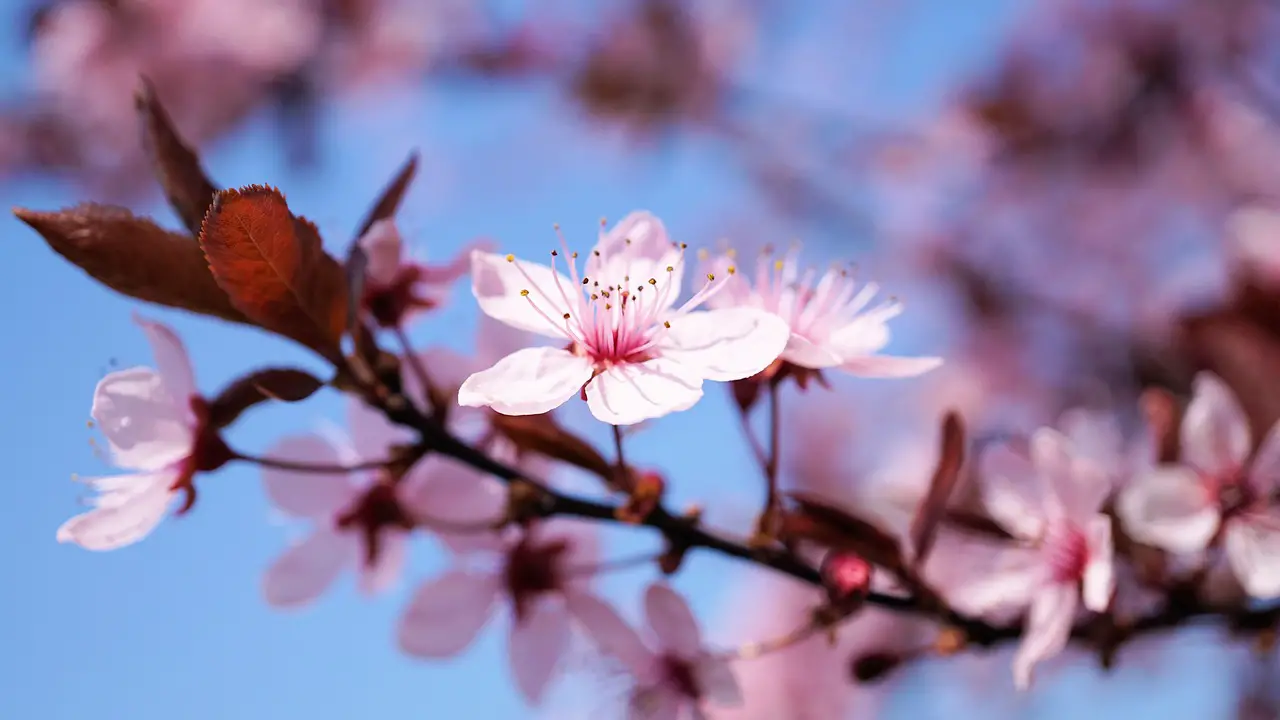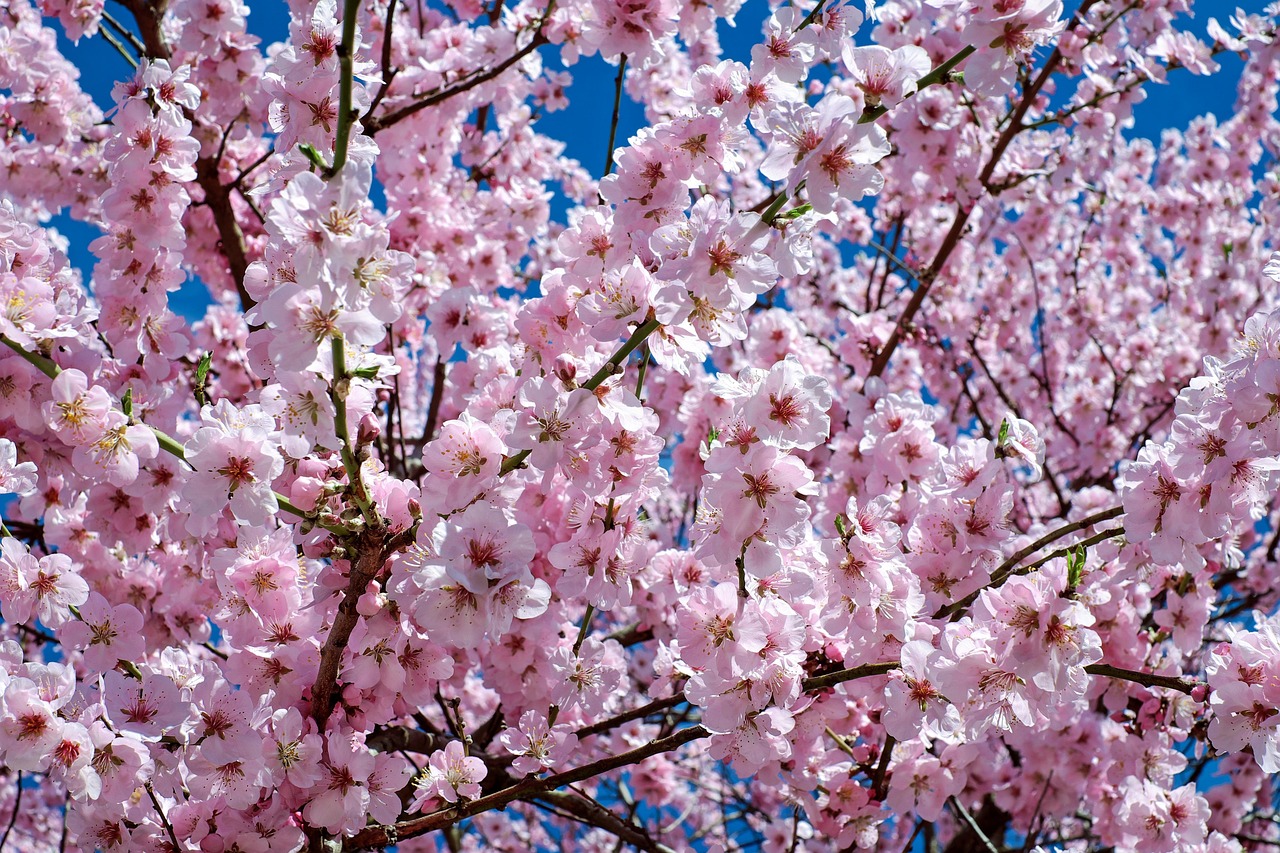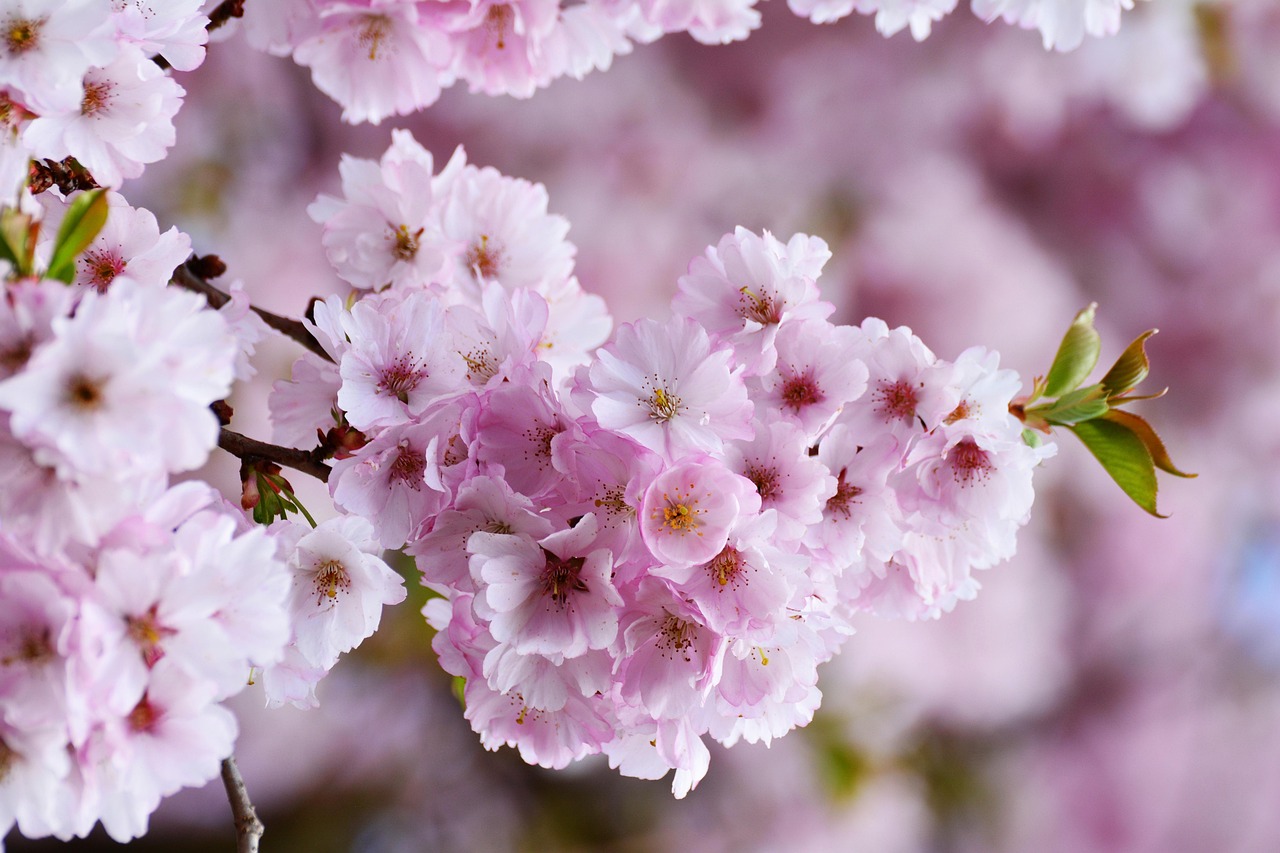Pruning cherry trees is essential for improving sunlight exposure, enhancing fruit quality, and promoting healthy growth. Proper techniques allow light to penetrate the canopy, reducing disease risk and encouraging better overall tree structure.
Cherry trees are beloved for their beautiful blossoms and delicious fruit. However, growing healthy cherry trees requires more than just planting and watering. Pruning plays a crucial role in maintaining the health and productivity of these trees. By strategically cutting branches, gardeners can improve sunlight exposure, which is vital for the photosynthesis process and overall tree vitality.

Sunlight exposure affects not only the growth of cherry trees but also the quality of the fruit they produce. When trees receive adequate sunlight, they tend to bear larger, sweeter cherries. Conversely, trees that are overly dense with foliage may struggle to produce fruit or yield smaller, less flavorful cherries. Therefore, understanding how to properly prune cherry trees is a key skill for any gardener.
Understanding Cherry Tree Growth
Before diving into pruning techniques, it’s important to understand the growth habits of cherry trees. They typically grow in a rounded shape, which can lead to crowded branches if not managed properly. This crowding can block sunlight from reaching the inner branches and leaves, resulting in poor fruit production.
Cherry trees generally fall into two categories: sweet cherries and sour cherries. Each type has unique growth characteristics, but both benefit from proper pruning. Below are some key differences between sweet and sour cherry trees:

| Type of Cherry | Growth Habit | Fruit Characteristics |
|---|---|---|
| Sweet Cherry | Tall with a broad canopy | Larger, sweeter fruits |
| Sour Cherry | Shorter with a more upright growth | Smaller, tart fruits |
Understanding these differences can help gardeners choose the best pruning methods for their specific cherry trees. Regardless of the type, all cherry trees require regular maintenance to ensure they thrive. This includes not just pruning but also monitoring for pests and diseases.
When to Prune Cherry Trees
The timing of pruning is crucial for cherry trees. Generally, the best time to prune is during late winter or early spring before new growth begins. This timing allows gardeners to see the tree’s structure clearly and make informed cuts without risking damage to new buds.
Pruning during dormancy helps reduce stress on the tree. It also minimizes the risk of disease since many pathogens are less active during the colder months. However, it is essential to avoid pruning during the fall. This can stimulate new growth that may not survive the winter cold.

Tools Needed for Pruning
Having the right tools is essential for effective pruning. Here are some common tools used for pruning cherry trees:
- Hand Pruners: Ideal for small branches (up to 1 inch in diameter).
- Loppers: Useful for medium-sized branches (1 to 2 inches in diameter).
- Saws: Necessary for larger branches (over 2 inches in diameter).
- Pruning Shears: Great for detailed work on smaller branches.
- Gloves: Protect hands from cuts and scrapes.
- Ladder: Helps reach higher branches safely.
Using sharp tools ensures clean cuts that heal quickly, reducing the risk of disease entering the tree through wounds. It is also advisable to disinfect tools between cuts, especially if working with an infected tree.
Basic Pruning Techniques
Now that you have the right tools and timing, let’s explore some basic pruning techniques. These methods will help you shape your cherry tree and promote better sunlight exposure:

Crown Thinning
Crown thinning involves removing select branches to allow light to penetrate deeper into the canopy. This encourages better air circulation and reduces the risk of fungal diseases. Focus on removing crowded or crossing branches while ensuring the tree maintains its natural shape.
Crown Raising
Crown raising involves removing lower branches to lift the canopy. This technique increases sunlight exposure for lower parts of the tree and can make harvesting easier. Be cautious not to remove too many lower branches at once; this can shock the tree.
Crown Reduction
Crown reduction entails shortening the height of the tree by cutting back taller branches. This technique helps manage size while promoting balanced growth throughout the tree. It’s important to make cuts above a lateral branch to encourage new growth from that point.
By employing these techniques, gardeners can enhance sunlight exposure significantly, leading to healthier cherry trees and more abundant fruit production.
Advanced Pruning Techniques
After mastering basic pruning techniques, gardeners can explore advanced methods to enhance the health and productivity of cherry trees. These techniques focus on maximizing sunlight exposure and improving tree structure for optimal fruit production.
Espalier Pruning
Espalier pruning is a technique that trains trees to grow flat against a trellis or wall. This method is particularly beneficial in limited spaces and can significantly increase sunlight exposure. Here are some key steps to follow when espaliering cherry trees:
- Select the Right Variety: Choose a cherry variety that responds well to espaliering, such as sweet cherries.
- Choose a Support Structure: Install a trellis or sturdy wires to provide support for the branches.
- Start Early: Begin training the tree when it is young to develop the desired shape.
- Prune Regularly: Consistently prune to maintain the flat shape and encourage lateral growth.
Espaliered cherry trees not only save space but also create an attractive focal point in the garden while ensuring that all branches receive adequate sunlight.
Renewal Pruning
Renewal pruning is a technique used primarily on older cherry trees that have become less productive. This method rejuvenates the tree by removing old, unproductive wood and encouraging new growth. Here’s how to perform renewal pruning:
- Identify Old Wood: Look for branches that are thick, dark, or lacking in fruit.
- Remove Unproductive Branches: Cut back these branches to promote new growth from younger wood.
- Maintain Balance: Ensure that you do not remove too much at once, which can stress the tree.
This technique can revitalize older cherry trees, leading to improved fruit yield and better health.
The Importance of Proper Techniques
Utilizing proper pruning techniques is essential not only for enhancing sunlight exposure but also for maintaining tree health. Incorrect pruning can lead to several issues, including:
- Pest Infestation: Poorly pruned trees may develop weak spots that attract pests.
- Disease Spread: Wounds from improper cuts can become entry points for diseases.
- Imbalanced Growth: Incorrect cuts may result in uneven growth and poor fruit production.
To avoid these issues, gardeners should focus on making clean cuts, using sharp tools, and following recommended pruning guidelines. Additionally, understanding the natural growth patterns of cherry trees allows for more effective pruning interventions.
Seasonal Care After Pruning
Caring for cherry trees after pruning is just as important as the pruning process itself. Here are some key post-pruning care steps:
Watering
After pruning, it is vital to maintain proper hydration levels. Water the tree thoroughly to support new growth and help heal any wounds. However, avoid overwatering, as this can lead to root rot.
Fertilization
Applying a balanced fertilizer after pruning can provide essential nutrients to support recovery and new growth. Look for fertilizers specifically designed for fruit trees. Follow the manufacturer’s instructions for application rates and timing.
Pest and Disease Management
Regularly inspect your cherry trees for signs of pests or diseases following pruning. Early detection allows for timely intervention, reducing the risk of serious damage. Consider using organic pesticides or fungicides as needed.
Common Mistakes to Avoid
<pWhile pruning is beneficial, there are common mistakes that gardeners should be aware of. Avoiding these pitfalls can lead to healthier cherry trees and improved fruit production:
- Pruning Too Late: Cutting branches after new buds have formed can hinder growth.
- Excessive Pruning: Removing too many branches at once can shock the tree.
- Ignoring Tree Structure: Failing to consider the tree’s natural shape may result in poor aesthetics and growth.
By staying informed about best practices and common errors, gardeners can ensure their cherry trees thrive and produce abundant fruit each season.
Conclusion on Pruning Techniques
Cultivating healthy cherry trees through proper pruning techniques involves understanding growth patterns, timing, tools, and post-care strategies. Implementing advanced methods like espalier and renewal pruning can significantly enhance sunlight exposure and overall tree health. Through vigilance and care, gardeners will enjoy flourishing cherry trees that yield sweet, delicious fruits.
Pest and Disease Management for Cherry Trees
Maintaining healthy cherry trees requires more than just proper pruning. Pest and disease management is equally important to ensure that trees remain productive and vibrant. Understanding common pests and diseases can help gardeners take proactive measures to protect their cherry trees.
Common Pests Affecting Cherry Trees
Cherry trees are susceptible to a variety of pests that can harm their health and reduce fruit yield. Here are some common pests to watch out for:
- Cherry Fruit Fly: This pest lays eggs in the fruit, causing it to rot and drop prematurely. Regular inspection and removal of infested fruit can help control this pest.
- Aphids: These small insects feed on tree sap, weakening the tree and potentially transmitting diseases. They can be managed with insecticidal soap or natural predators like ladybugs.
- Spider Mites: These tiny pests thrive in dry conditions and can cause leaf discoloration. Increasing humidity around the tree and using miticides can help combat them.
- Scale Insects: Scale insects attach themselves to branches and suck sap, leading to weakened trees. Horticultural oils can effectively control scale populations.
Disease Threats to Cherry Trees
Cherry trees can also fall victim to various diseases that affect their growth and fruit production. Knowing these diseases allows for timely intervention:
- Brown Rot: This fungal disease causes fruit to rot and can spread rapidly. Maintaining good airflow through pruning and removing infected fruit can help prevent outbreaks.
- Cherry Leaf Spot: This disease manifests as dark spots on leaves, leading to premature leaf drop. Applying fungicides in the early spring can help manage this issue.
- Cankers: Cankers are areas of dead tissue on branches caused by fungal infections. Pruning out affected areas and ensuring proper tree care helps manage cankers.
- Powdery Mildew: This fungal disease appears as a white powdery coating on leaves. It can be controlled by improving air circulation and using fungicidal treatments.
Organic Pest Control Methods
For those who prefer environmentally friendly solutions, there are several organic pest control methods available. These strategies are effective while minimizing harm to beneficial insects and the surrounding ecosystem:
- Neem Oil: Derived from the seeds of the neem tree, neem oil acts as a natural pesticide against various pests.
- Insecticidal Soap: This soap kills soft-bodied insects like aphids and spider mites without harming plants when used correctly.
- Diatomaceous Earth: This natural powder can deter crawling insects by damaging their exoskeletons when they come into contact with it.
- Companion Planting: Planting certain flowers or herbs near cherry trees can attract beneficial insects that prey on harmful pests.
Fertilization Techniques for Healthy Trees
A well-balanced fertilization routine is vital for the overall health of cherry trees. Proper fertilization supports not only growth but also enhances fruit production. Here are key points to consider when fertilizing cherry trees:
Choosing the Right Fertilizer
Select a fertilizer formulated specifically for fruit trees. Look for a balanced N-P-K ratio, such as 10-10-10 or 12-12-12, which indicates equal parts nitrogen (N), phosphorus (P), and potassium (K). Each nutrient plays an essential role:
- Nitrogen: Promotes leafy growth and overall health.
- Phosphorus: Encourages root development and flowering.
- Potassium: Supports fruit quality and resistance to diseases.
Timing of Fertilization
The best time to fertilize cherry trees is in early spring as new growth begins. This timing helps provide the necessary nutrients right when the tree needs them most. Follow up with a second application in late summer to support fruit development.
Application Methods
Fertilizer can be applied in several ways, including:
- Granular Fertilizers: Spread evenly around the base of the tree, avoiding direct contact with the trunk.
- Liquid Fertilizers: Dilute according to package instructions and apply using a watering can or sprayer for even distribution.
- Soil Amendments: Incorporate compost or well-rotted manure into the soil during planting or annual refreshment.
Irrigation Practices for Optimal Growth
Irrigation is critical for cherry trees, especially during dry spells. Providing adequate water helps promote healthy growth and fruit production. Here are some best practices for irrigating cherry trees:
Watering Frequency
Cherry trees typically require about 1 inch of water per week, either from rainfall or supplemental irrigation. During dry periods, check soil moisture regularly to determine if additional watering is necessary.
Irrigation Techniques
The method of irrigation is also important. Some effective techniques include:
- Drip Irrigation: This method delivers water directly to the root zone, minimizing evaporation and runoff.
- Soaker Hoses: Soaker hoses allow water to seep out slowly along their length, providing deep watering without wetting foliage.
- Spray Irrigation: While less efficient, it can be used in some situations; however, care must be taken not to wet the leaves excessively, as this may promote fungal diseases.
Sufficient irrigation combined with proper fertilization, pest management, and pruning techniques can create a thriving environment for cherry trees, resulting in abundant fruit production each season.
Additional Factors Impacting Cherry Tree Health
In addition to pruning, pest management, fertilization, and irrigation, several other factors can influence the overall health and productivity of cherry trees. Understanding these factors can contribute significantly to the successful cultivation of cherry trees.
Soil Quality and Composition
The soil in which cherry trees are planted plays a vital role in their growth. Well-drained, loamy soil is ideal for cherry trees, providing the right balance of nutrients and moisture retention. Here are some tips for ensuring optimal soil conditions:
- Soil Testing: Conduct a soil test to assess pH levels and nutrient content. Cherry trees thrive in slightly acidic to neutral pH (6.0-7.0).
- Amendments: Based on soil test results, consider adding organic matter such as compost or peat moss to improve fertility and structure.
- Drainage: Ensure that the planting site has good drainage to prevent waterlogging, which can lead to root rot.
Climate Considerations
Cherry trees are sensitive to climate conditions. They require a certain number of chill hours during winter to produce fruit in the spring. Here are some climate considerations:
- Hardiness Zones: Check the hardiness zone for the specific cherry variety being planted. Most sweet cherries thrive in zones 5-8.
- Frost Protection: Late spring frosts can damage blossoms. Use protective coverings or wind machines to safeguard against unexpected cold snaps.
- Sunlight Requirements: Cherry trees need full sun for at least six hours a day. Ensure that they are planted in locations that receive ample sunlight throughout the day.
Mulching Practices
Applying mulch around the base of cherry trees can provide numerous benefits, including moisture retention, weed control, and temperature regulation. Here are some tips for effective mulching:
- Material Selection: Use organic materials like wood chips, bark, or straw. These materials break down over time, enriching the soil.
- Application Depth: Apply a 2-4 inch layer of mulch, ensuring it does not touch the trunk to prevent rot.
- Replenishment: Regularly check and replenish mulch as it decomposes or gets washed away.
Common Misconceptions About Pruning Cherry Trees
There are several misconceptions about pruning cherry trees that can lead to improper practices. Clearing up these myths can help gardeners make informed decisions:
- Myth: Pruning is only necessary when trees are sick. Pruning is essential for all healthy trees to maintain structure and promote growth.
- Myth: Any time is a good time to prune. Timing is crucial; late winter or early spring is ideal before growth begins.
- Myth: More pruning equals better fruit production. Excessive pruning can shock the tree and reduce yield; moderation is key.
Final Thoughts
Cultivating cherry trees for optimal sunlight exposure involves a blend of effective pruning techniques, proper pest and disease management, appropriate fertilization, and diligent care practices. By understanding the specific needs of cherry trees and addressing factors such as soil quality, climate conditions, and watering practices, gardeners can foster healthy trees that yield delicious fruit.
A well-cared-for cherry tree not only enhances a garden’s beauty with its stunning blooms but also provides an enjoyable harvest season after season. By integrating all these elements—pruning, soil management, pest control, and irrigation—gardeners can create an environment where cherry trees thrive. With patience and knowledge, anyone can successfully grow vibrant cherry trees that produce an abundance of sweet cherries for years to come.
